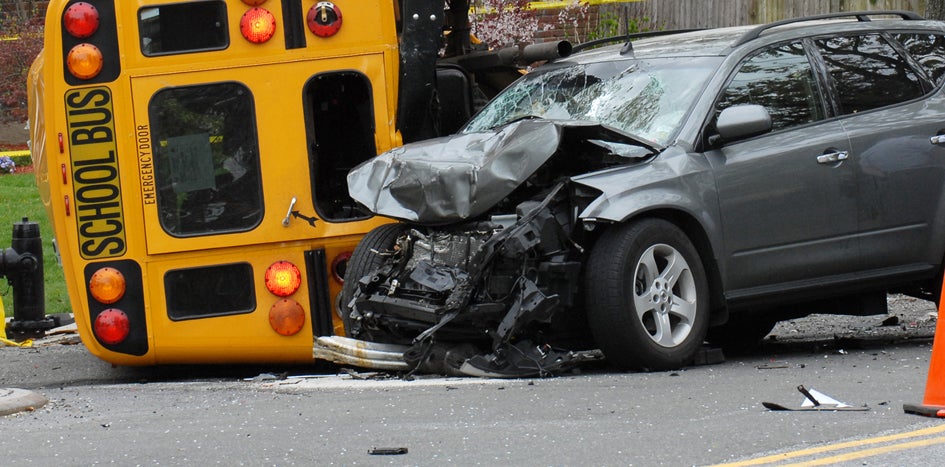Essential Wildfire Safety Tips for Schools
The Texas A&M Forest Service (TFS) cites Texas’ ever-changing land use, climate, and population as reasons for increased wildfire risk. TFS reports 80% of wildfires occur within two miles of a community. However, there are strategies and programs to limit the effects of fires on schools.
Prepare
Wildfires are unpredictable. The first step in wildfire preparedness is knowing how to reduce risk. Start a simple assessment, similar to how you evaluate other hazards. Ask yourself, “Where could things go wrong?” Your safety and security committee should work with local fire authorities to conduct a community risk assessment and a district-specific conduct a risk assessment.
Consider factors such as:
- Vegetation
- Surrounding structures
- Construction materials used,
- Topography
- Seasonal conditions such as drought, thunderstorms, and wind
- Wildfire history and current activity in the area
From the risk assessments, your safety and security committee creates a multi-year action plan to identify and prioritize actions to reduce risk to facilities. Your committee should also develop an emergency operations plan hazard-specific annex that outlines wildfire vulnerability and response.
Your annex should:
- Include the five phases of emergency management
- Identify evacuation routes
- Detail mitigation and preparedness strategies
Coordination with local, regional, and state emergency responders is essential to developing plans and response strategies that account for life safety and property preservation.
Minimize Hot Work Risk
Hot work includes activities like welding, cutting, and soldering, which use open flames, sparks, or intense heat. These tasks are essential in school operations and construction activities. However, hot work can increase the risk of wildfires, especially when done outdoors in high wind and dry areas with lots of vegetation.
Sparks and heat from these activities can easily ignite nearby plants and other flammable materials, leading to uncontrolled fires. Understanding how hot work can cause wildfires is important for taking steps to prevent them.
Protect
Once you identify the risk, you can implement controls to mitigate loss:
- Be aware of railroad tracks near schools. Train wheels can spark on tracks and start fires.
- Create a defensible space around a facility by using the National Fire Protection Association’s zone concept. You will create an empty space between shrubs and trees to reduce the chance of flames leaping between them.
- Choose fire-resistant plants for landscaping. That includes plants with a high-moisture content to withstand high temperatures and slow-growing plants to reduce fuel for flames.
- Keep trees pruned approximately 6 to 10 feet off the ground and remove dead branches. This not only mitigates fire risk but also improves school facility security.
- Mow grassy areas regularly. Grass should never be more than 4 inches tall.
- Remove dead and dry plants, fallen leaves, pinecones, dead tree branches, and other vegetations that could fuel a fire.
- Have water sources available to help extinguish hot spots if it is safe to do so.
Prevent
There are countless ways a wildfire can start. Here are other actions you and your staff can take to prevent the most common fire starters:
- Comply with burn bans.
- Protect safety chains on trailers and service vehicles that can drag and send sparks flying.
- Secure welding and mechanical areas and agriculture facilities to prevent equipment sparks.
- Check tires regularly to prevent tire blow outs. Rims can hit pavement and spark. Include buses, administrative and event vehicles, patrol cars, and support services vehicles in your inspections.
- Secure all tools and equipment that can fall off a truck and cause sparks.
- Avoid parking in tall, dry grass. Fires could be ignited by catalytic converters, which are attached to vehicle undercarriages and sometimes reach up to 2,000 degrees. This tip is particularly important when designating additional parking areas for school events such as athletic contests and graduations.
- Remove anything that can spark when mowing or weed eating, such as rocks and pieces of metal.
- Keep pest control up to date to prevent rodents from chewing through wires.
Wildfire prevention and mitigation strategies may vary based on location. Collaboration with first responder agencies and local, regional, and state emergency management partners can help districts develop plans that best meet their needs.
Have Safety and Security or Emergency Management Questions?
Members with Auto, Liability, Property, and Workers’ Compensation coverage can request training and support from their risk solutions consultant.
This article was originally published in February 2023. It has been updated for comprehensiveness.
Risk Solutions Staff
The TASB risk solutions team includes risk solutions consultants and communications professionals who deliver training, consultations, articles, and resources that help Fund members control losses and their associated costs.
You May Also Like…
View All Related Insights
How To Manage and Mitigate Your Burn Risks
From bustling kitchens to science labs to maintenance and transportation shops, there are plenty of opportunities for burns to occur at your school or community college.

The Importance of a Thorough Accident Investigation
Conduct accident investigations to uncover the root causes of workplace injuries, correct them, and reduce the risk of similar injuries.

Complete These District Audit Report To-Do’s Before Summer Break
Districts should conduct climate surveys and intruder assessments while stakeholders are accessible and staff, students, and visitors are coming and going.

8 Steps to a Preventative Maintenance Program
Preventative maintenance can save money for schools and minimize operational disruptions by extending the lifecycles of roofs, boilers, and other property.
